
The Ultimate Guide to Moonflower Plant Care and Growing Tips
If you’re looking for the ultimate guide to caring for and growing moonflower plants, then look no further. This comprehensive post has everything you need to ensure your moonflowers thrive and bloom beautifully. From soil and sunlight requirements to watering and maintenance tips, we’ve got you covered. Whether you’re a seasoned gardener or just starting out, this guide will provide you with all the information you need to successfully care for and grow moonflower plants. So, let’s dive in and make your moonflower garden the envy of the neighborhood!
Table of Contents
ToggleWhat is a Moonflower Plant?
Definition and botanical name
The moonflower, also known as Ipomoea alba, is a unique and beautiful plant that is known for its large, fragrant white flowers that bloom at night. This vine-like plant is a member of the morning glory family and is native to the Americas. The moonflower is often grown as an ornamental plant in gardens and is prized for its stunning, night-blooming flowers. It is a fast-growing plant that can reach heights of up to 15 feet, making it a great choice for trellises, fences, and arbors. With its large, heart-shaped leaves and delicate, trumpet-shaped flowers, the moonflower is a captivating addition to any garden. With the right care and attention, you can enjoy the beauty and fragrance of moonflowers in your own backyard.
Origin and history
The moonflower, also known as Ipomoea alba, has a rich history and has been a symbol of beauty and mystery for centuries. Native to the Americas, the moonflower has long been valued for its stunning, night-blooming flowers and has been used in traditional medicine and spiritual practices by indigenous cultures. In addition to its ornamental use, the moonflower has also played a role in various cultural traditions and folklore, often associated with themes of love, romance, and spirituality. Its unique ability to bloom at night and release a sweet fragrance has captured the imagination of people around the world. As a fast-growing and resilient plant, the moonflower has also been admired for its ability to thrive in diverse climates and environments. Its rich history and cultural significance make the moonflower a truly special and iconic plant.
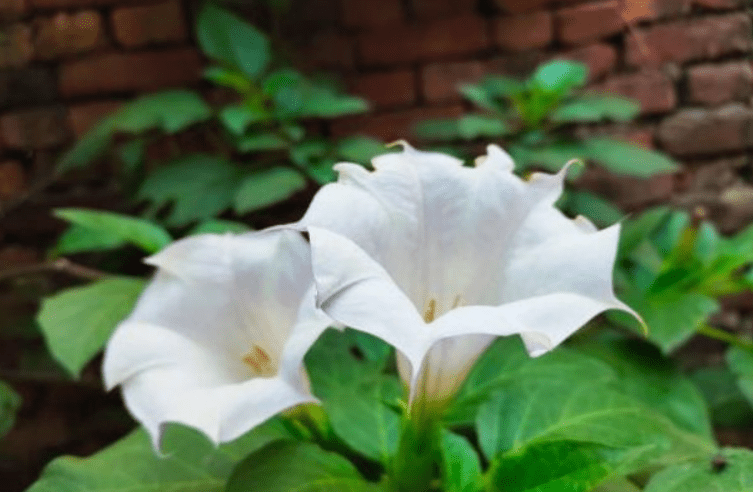
Benefits of Growing Moonflower Plants
Aesthetic appeal in the garden
Moonflowers can add a touch of enchantment to any garden with their large, white, fragrant blooms that open in the evening and close at sunrise. Their beauty and fragrance can create a magical and romantic atmosphere, perfect for enjoying a peaceful evening in your own backyard. The moonflower’s vines can also climb and cover fences, trellises, or arbors, creating a stunning visual display. With the right care and attention, you can enjoy the beauty and fragrance of moonflowers in your own backyard. Whether you want to create a serene and romantic garden or simply enjoy the aesthetic appeal of these stunning flowers, adding moonflowers to your garden can elevate its overall beauty and ambiance. So why not bring a touch of mystique to your garden with the enchanting moonflower?
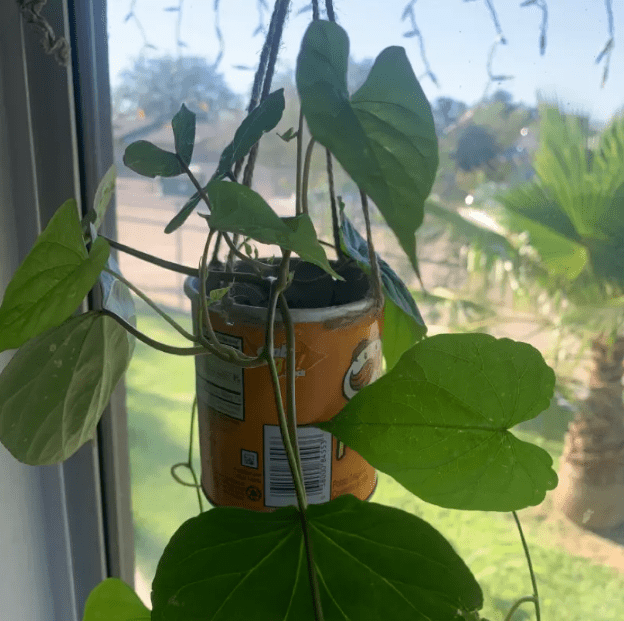
Attraction for pollinators (moths, bees)
Moonflowers are not only beautiful to look at, but they also serve an important purpose in attracting pollinators such as moths and bees. These pollinators are essential for the reproduction of many plants, including fruits and vegetables that we rely on for food. By growing moonflowers in your garden, you are not only adding aesthetic appeal, but you are also supporting the local ecosystem by providing a habitat for these important pollinators. Moonflowers can help create a thriving and diverse garden environment that benefits both the plants and wildlife in your area. So, by growing moonflowers, you are not only enhancing the beauty of your garden, but you are also contributing to the health and vitality of the local ecosystem.
Medicinal and cultural significance
The moonflower has a rich history of medicinal and cultural significance. In many cultures, the moonflower is revered for its calming and soothing properties, often used in herbal remedies to promote relaxation and sleep. Its delicate and intoxicating fragrance has been used in aromatherapy to reduce stress and anxiety. Additionally, the moonflower holds cultural significance in various traditions, symbolizing love, beauty, and mystery. By including moonflowers in your garden, you are not only adding beauty and attracting pollinators, but you are also connecting with a plant that has a deep-rooted history of medicinal and cultural importance. Embrace the moonflower in your garden and appreciate its multifaceted significance.
Types of Moonflower Plants
Common varieties and species
When it comes to growing moonflowers, you are not just adding beauty to your garden, you are also contributing to the health of the local ecosystem. Moonflowers have a rich history of medicinal and cultural significance. In many cultures, they are revered for their calming and soothing properties, used in herbal remedies to promote relaxation and sleep. The fragrance of moonflowers has been used in aromatherapy to reduce stress and anxiety. Additionally, these flowers hold cultural significance in various traditions, symbolizing love, beauty, and mystery. By including moonflowers in your garden, you are not only adding beauty and attracting pollinators, but you are also connecting with a plant that has a deep-rooted history of medicinal and cultural importance. Embrace the moonflower in your garden and appreciate its multifaceted significance.
Differences and similarities
When it comes to growing moonflowers, it’s important to understand the different types and species that are available. Common varieties of moonflowers include the Ipomoea alba, which is a large, white-flowered species that blooms at night and has a sweet fragrance. Another species is the Ipomoea turbinata, which has smaller, pink or purple flowers that also bloom at night. It’s important to consider the differences in size, color, and fragrance when choosing which moonflowers to plant in your garden.
On the other hand, despite these differences, all moonflowers share some similarities. They are all night-blooming plants, which means they open their flowers in the evening and close them in the morning. They are also known for their sweet fragrance, which attracts night-time pollinators like moths and bats. Additionally, moonflowers are all part of the Ipomoea genus, which means they share certain characteristics and growing requirements.
By understanding the differences and similarities among moonflower varieties, you can make informed choices about which ones to include in your garden. Whether you prefer the large, white blooms of the Ipomoea alba or the smaller, pink flowers of the Ipomoea turbinata, each type of moonflower will bring beauty and ecological benefits to your outdoor space. Embrace the diversity of moonflowers and enjoy the unique qualities of each variety in your garden.
How to Grow Moonflower Plants
Choosing the right location (sunlight and soil requirements)
When choosing a location to grow moonflower plants, it’s important to consider their sunlight and soil requirements. Moonflowers thrive in full sun, so look for a spot in your garden that receives at least 6-8 hours of direct sunlight per day. Additionally, they prefer well-draining, fertile soil with a slightly acidic to neutral pH level. It’s also important to provide sturdy support for moonflower vines to climb, as they can grow quite tall.
By selecting the right location and providing the proper growing conditions, you can ensure that your moonflower plants thrive and produce beautiful, fragrant blooms. With a little care and attention, you can create a stunning moonlit garden that will delight both you and any nighttime pollinators that are attracted to the sweet fragrance of these plants. Happy gardening!
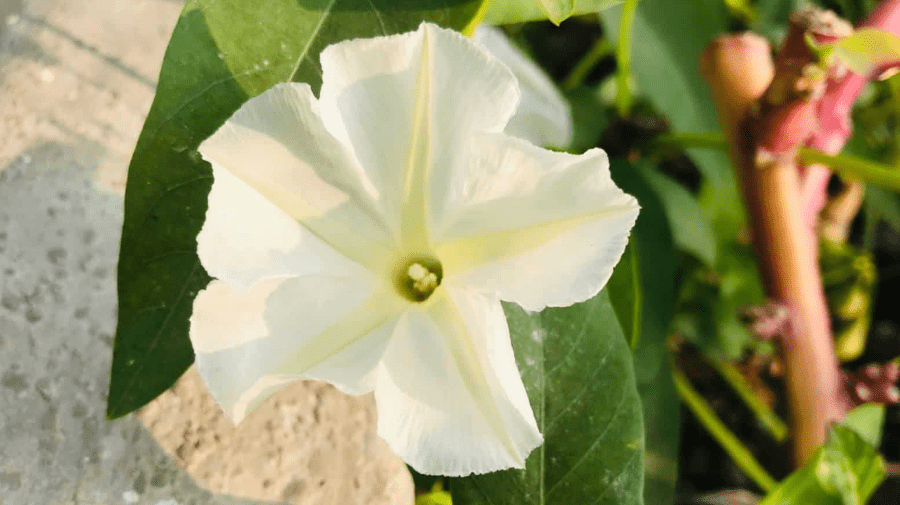
Step-by-step planting guide (seeds, seedlings)
Planting moonflower plants can be a rewarding and beautiful experience. Whether you are starting from seeds or seedlings, it’s important to follow a step-by-step planting guide to ensure the best results. If you are planting seeds, it’s crucial to sow them in well-draining soil and provide them with plenty of sunlight. You can start seeds indoors 4-6 weeks before the last frost date or directly sow them in your garden after the danger of frost has passed. For seedlings, it’s important to gently remove them from their containers and carefully plant them in the ground, making sure to provide adequate spacing between each plant. Water the newly planted seeds or seedlings thoroughly and continue to water them regularly to keep the soil consistently moist but not waterlogged. With proper care and attention, you can watch your moonflower plants grow and bloom into stunning, fragrant flowers that will bring beauty and joy to your garden. So, don’t hesitate to get started on your moonflower planting journey and enjoy the process of nurturing these lovely plants into bloom. Happy planting!
Caring for Your Moonflower Plant
Watering and fertilization guidelines
When it comes to watering and fertilizing your moonflower plants, it’s important to follow some guidelines to ensure their healthy growth and blooming. Moonflowers thrive in well-draining soil, so be sure to plant them in an area where the soil can easily absorb excess water. When watering your moonflowers, it’s essential to provide them with consistent moisture without overwatering. This means watering regularly to keep the soil consistently moist but not waterlogged.
As for fertilization, moonflowers benefit from a balanced fertilizer application every 4-6 weeks during the growing season. Be sure to follow the instructions on the fertilizer package and apply it to the soil around the base of the plants. This will provide them with the necessary nutrients to support their growth and blooming.
With proper watering and fertilization, you can watch your moonflower plants thrive and produce stunning, fragrant flowers that will enhance the beauty of your garden. So, don’t hesitate to give your moonflowers the care and attention they need to flourish. Happy gardening!
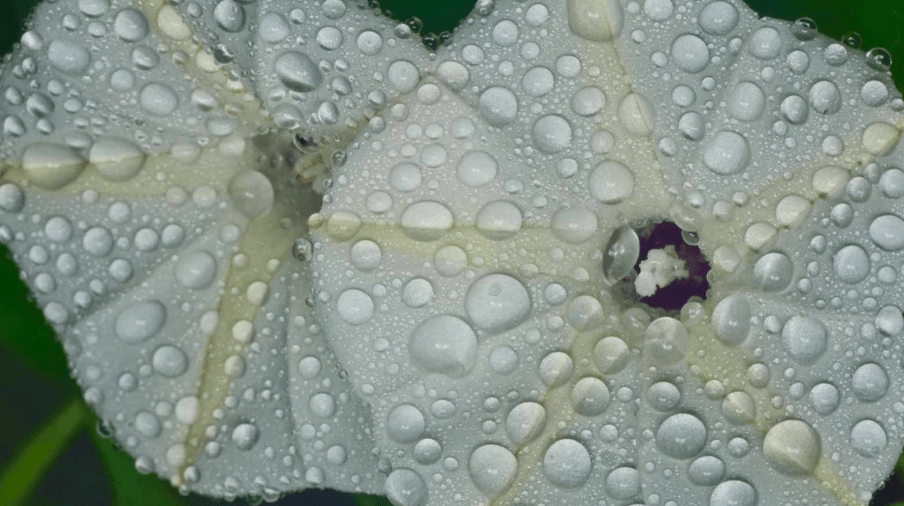
Pruning and training techniques
Are essential for maintaining the health and shape of your plants. By removing dead or diseased branches, you can promote new growth and prevent the spread of disease. Training your plants to grow in a certain direction or shape can also help to create a tidy and attractive garden space. By using techniques such as trellising or staking, you can support the growth of your plants and encourage them to grow in a desired direction. These practices can help to maximize the health and productivity of your plants, ensuring a bountiful and beautiful garden. Don’t overlook the importance of pruning and training techniques in your gardening routine. With a little extra care and attention, you can help your plants to thrive and flourish. So, take the time to learn and implement these techniques in your garden and watch your plants reach their full potential. Happy gardening!
Common pests and diseases (prevention and treatment)
Are important factors to consider when maintaining a healthy garden. It’s important to keep an eye out for common pests such as aphids, slugs, and snails, as well as diseases like powdery mildew and blight. One way to prevent these issues is to practice good garden hygiene, such as removing debris and weeds that can harbor pests and disease. Additionally, using natural predators and organic pest controls can help to keep these issues at bay.
When it comes to treatment, it’s important to act quickly and effectively. Utilizing natural remedies such as neem oil or insecticidal soap can help to combat pests, while properly pruning and disposing of infected plants can help to control diseases. It’s also important to regularly inspect your plants for any signs of pests or diseases so that you can address the issue before it becomes a larger problem.
By staying proactive and implementing prevention and treatment techniques, you can keep your garden healthy and thriving. Don’t let common pests and diseases discourage you from gardening – with the right knowledge and tools, you can maintain a beautiful and vibrant garden space. Your efforts will pay off in the form of a bountiful and stunning garden that you can enjoy for years to come. Happy gardening!
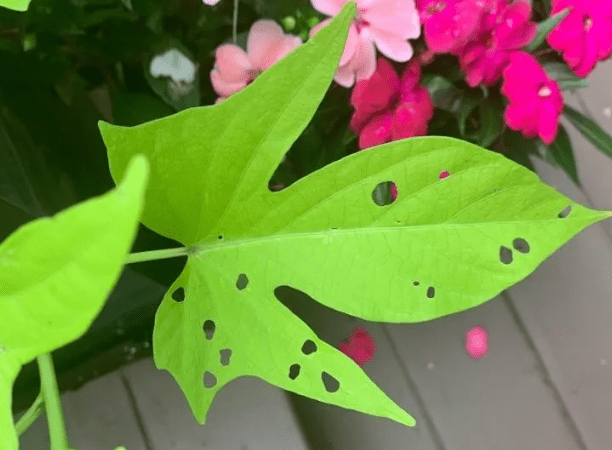
Propagating Moonflower Plants
Methods of propagation (seeds, cuttings)
When it comes to propagating moonflower plants, there are a few different methods to choose from. One of the most common methods is to propagate moonflowers from seeds. This can be a simple and cost-effective way to grow new plants. Another method of propagation is through cuttings. Taking a cutting from an existing plant and allowing it to root and grow into a new plant can be an effective way to propagate moonflowers. Both of these methods have their own advantages and it’s important to choose the method that works best for you and your gardening needs. Whether you choose to propagate from seeds or cuttings, the key is to be patient and provide the right conditions for the new plants to thrive. By taking the time to propagate moonflowers, you can expand your garden and enjoy the beauty of these stunning plants. Happy gardening!
Detailed propagation steps
can vary depending on the method you choose. If you are propagating moonflowers from seeds, start by soaking the seeds in warm water for 24 hours to soften the seed coat. After soaking, plant the seeds in a well-draining potting mix and keep them moist until they germinate. Once the seedlings have developed true leaves, they can be transplanted into their permanent growing location.
If you prefer propagating moonflowers through cuttings, take a 6-8 inch cutting from a healthy, established plant. Remove the lower leaves and dip the cut end in rooting hormone to encourage root development. Plant the cutting in a well-draining potting mix and keep it consistently moist until roots develop. Once roots have formed, the new plant can be transplanted into its permanent growing location.
Whichever method you choose, it’s important to provide the right growing conditions for the new plants. This includes ample sunlight, well-draining soil, and regular watering. With patience and proper care, you can successfully propagate moonflowers and expand your garden with these beautiful and fragrant plants. Happy gardening!
Moonflower Plant in Landscaping
Is a great addition to any garden or landscaping design. With its beautiful and fragrant flowers, it can add a touch of elegance and charm to any outdoor space. One of the best things about the moonflower plant is that it is relatively easy to propagate, allowing you to expand your garden and share this beautiful plant with others. There are a few different methods for propagating moonflowers, including collecting seeds and taking cuttings. Collecting seeds is a simple and cost-effective way to propagate moonflowers. Simply allow the flower to go to seed, then collect the seeds and plant them in a well-draining soil. Keep the soil consistently moist and the seeds should germinate within a few weeks. Taking cuttings is another effective way to propagate moonflowers. Remove the lower leaves and dip the cut end in rooting hormone to encourage root development. Plant the cutting in a well-draining potting mix and keep it consistently moist until roots develop. Once roots have formed, the new plant can be transplanted into its permanent growing location. Whichever method you choose, it’s important to provide the right growing conditions for the new plants. This includes ample sunlight, well-draining soil, and regular watering. With patience and proper care, you can successfully propagate moonflowers and expand your garden with these beautiful and fragrant plants. Happy gardening!
Common Problems and Solutions
Troubleshooting common growth issues
Can be frustrating, but there are simple solutions to help your plants thrive. If you notice your plants are struggling with growth, it may be time to take action. One common issue is poor root development. To address this, consider taking cuttings from healthy plants and propagating new ones. Remove the lower leaves and dip the cut end in rooting hormone to encourage root development. Plant the cutting in a well-draining potting mix and keep it consistently moist until roots develop. Once roots have formed, the new plant can be transplanted into its permanent growing location.
Another common issue is providing the right growing conditions for your plants. It’s important to provide ample sunlight, well-draining soil, and regular watering to ensure healthy growth. By addressing these common problems and providing the necessary care, you can successfully propagate moonflowers and expand your garden with these beautiful and fragrant plants. With patience and dedication, you can overcome common growth issues and enjoy a thriving garden. Happy gardening!
Pest and disease management
Is an important aspect of maintaining a healthy garden. It’s crucial to stay vigilant and regularly inspect your plants for any signs of pests or diseases. By identifying and addressing these issues early on, you can prevent them from spreading and causing damage to your plants. There are various methods for managing pests and diseases, including natural remedies, chemical treatments, and cultural practices. It’s important to choose the most appropriate method for your specific situation and take proactive measures to protect your plants. Additionally, proper plant care and maintenance can help to prevent pest and disease problems. This includes practices such as proper watering, pruning, and fertilizing, as well as providing the right growing conditions for your plants. By taking a proactive approach to pest and disease management, you can ensure the health and vitality of your garden, allowing your plants to thrive and flourish. Don’t let pests and diseases hold you back from enjoying a beautiful and successful garden – take action and keep your plants healthy and happy.
Tips for maintaining healthy moonflower plants
To maintain healthy moonflower plants, it’s important to be proactive in preventing and managing pests and diseases. One of the best ways to do this is by regularly inspecting your plants for any signs of trouble. Look for discoloration, spots, holes, or any unusual growth on the leaves and stems. By identifying and addressing these issues early on, you can prevent them from spreading and causing damage to your plants.
There are various methods for managing pests and diseases, including natural remedies, chemical treatments, and cultural practices. It’s important to choose the most appropriate method for your specific situation and take proactive measures to protect your plants. Don’t wait until the problem becomes severe – take action early to keep your plants healthy.
In addition to pest and disease management, proper plant care and maintenance are essential for keeping your moonflower plants healthy. This includes practices such as proper watering, pruning, and fertilizing, as well as providing the right growing conditions for your plants.
By taking a proactive approach to pest and disease management and ensuring proper plant care and maintenance, you can ensure the health and vitality of your moonflower plants. Don’t let pests and diseases hold you back from enjoying a beautiful and successful garden – take action and keep your plants healthy and happy
In conclusion, growing moonflower plants is a rewarding and enjoyable experience, and by following the tips and advice in this guide, you can ensure that your moonflower plants thrive and bloom beautifully. It’s important to remember that each plant is unique and may require individualized care, so be sure to monitor your plants closely and make adjustments as needed. With the right care and attention, you can enjoy the beauty of moonflower blooms in your garden for years to come. Happy gardening!
Frequently asked questions And Answer
It’s important to water your moonflower plant regularly, especially during the growing season. Be sure to water deeply, allowing the soil to dry slightly between waterings.
Moonflower plants thrive in well-draining, nutrient-rich soil. A mix of potting soil, perlite, and compost is ideal for optimal growth.
Moonflower plants require full sun to partial shade, so be sure to place them in a location where they will receive at least 6-8 hours of sunlight per day.
Yes, moonflower plants benefit from regular feeding with a balanced, all-purpose fertilizer. Be sure to follow the instructions on the fertilizer package for best results.
To encourage blooming, deadhead spent flowers regularly and provide adequate water and sunlight. Additionally, applying a bloom-boosting fertilizer can help promote abundant blooms.
Moonflower plants are relatively easy to grow, especially in warm climates. With proper care and attention to their growing requirements, you can enjoy beautiful, fragrant blooms throughout the growing season.
Yes, moonflower plants can be grown in containers, making them a great choice for patios, balconies, and small gardens. Just be sure to choose a large enough container and provide proper support for the vines to climb.
Yes, moonflower plants are toxic if ingested, so it’s important to keep them out of reach of pets and children. Be sure to handle them with care and wash your hands after tending to your moonflower plants.
